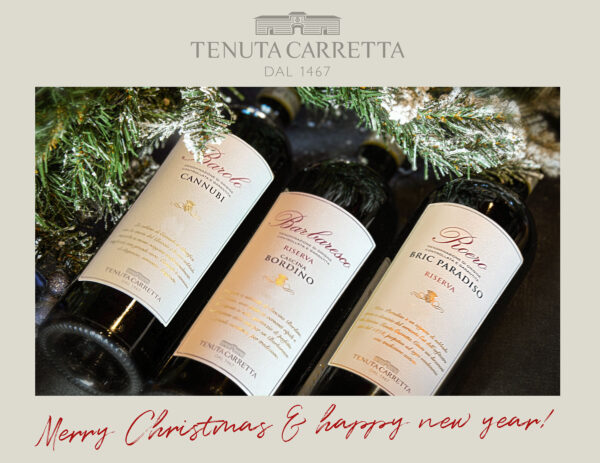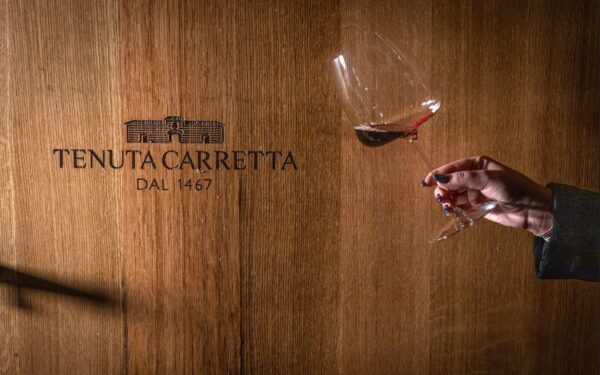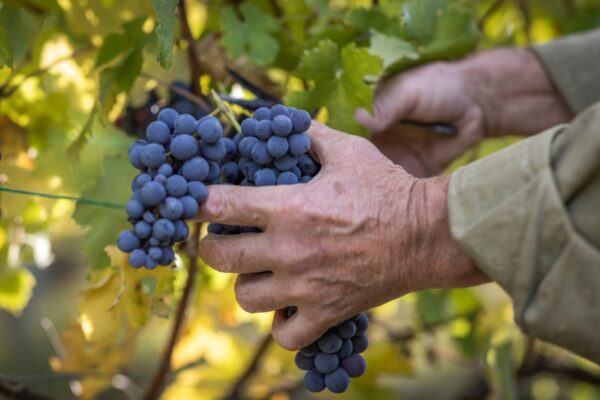• Wines
Canorei: a Vineyard Steeped in History
Reading time in

Canorei is a toponym already present in ancient maps; for this reason it has been granted the status of MGA (Additional Geographic Indication) within the Production Regulations of the Roero DOCG.
Since the delimited area is entirely located within the property of Tenuta Carretta, Canorei can be considered akin to a “cru monopole” – meaning an appellation exclusively used by the company.
THE VINEYARD
The vineyards of this appellation lie within the company’s property, in the southernmost portion, on typical Roero soil: sandy, rich in limestone, and with high drainage capacity. They give rise to Roero Arneis Riserva DOCG Canorei, a wine that further highlights the potential of Arneis as a flagship grape variety and symbol of the territory.
Just a few steps from the cellar, the Canorei vineyard extends over 2.5 hectares. Its location ensures perfect exposure to the sun and consequently excellent grape ripening. The sandy and calcareous soil exposes the plant – depending on seasonal weather events – to frequent water deficits. “With such lean and permeable soil,” explains Paolo Scaiola, winemaker at Tenuta Carretta, “the vine is always forced to seek nutrients and water deep down in the ground. This makes the plant and roots extremely agile and responsive, as well as faithful witnesses to the climatic trends of the vintage.”
The vineyard is cultivated using the Guyot training system: “The choice of Guyot training – continues Scaiola – is seemingly obligatory, as it is a classic expression of the tradition that sharply distinguishes Piedmont from many other Italian regions. However, the choice is actually based on a specific philosophy aimed at safeguarding the plant: our goal is to allow the vines to age – and age well. Avoiding the spur-pruned system, and preferring training methods that allow us to work on renewed wood, guarantees the plant a longer life”.
This philosophy is further evidenced by the remarkable age of the Roero Arneis Riserva Canorei vineyard, with plants that have on average surpassed 40 years of age – a remarkable longevity for Arneis. This translates into vines with low yields and thick-skinned grapes, making them more resistant to parasitic attacks and richer in phenolic compounds.
THE WINE
Roero Arneis Riserva Canorei, born from the grapes of these vineyards, will mark its 30th year of production with the 2024 harvest, tracing back to its inaugural vintage in 1994.
The harvest is carried out by hand in the early hours of the morning, to ensure maximum freshness of the grapes. The bunch is then gently pressed in its entirety. The resulting free-run juice undergoes initial cold maceration and then rests for 7 days at low temperature to clarify without the addition of additives. Afterward, it is fermented in stainless steel tanks. The wine is then transferred to tonneaux, predominantly of French oak and, to a lesser extent, acacia.
“Maturation in acacia is not a common choice – it has always been considered a wood of lesser oenological interest, as it is more difficult to manage due to the aromas it develops”, explains Scaiola. “After years of observation and research into the best way to express the voice of Canorei, however, we noticed that this deeply territorial combination (the Roero is rich in forests, and acacia here grows abundantly and spontaneously) harmonizes splendidly with the characteristics of Arneis. We use steam-bent wood rather than direct flame, therefore untoasted, to achieve softer and more delicate aromas, enhancing the grape’s character to the fullest.”
After maturation in tonneaux, bottling and bottle aging follow at the beginning of summer, continuing for at least another 12 months. Tenuta Carretta meticulously follows the natural rhythms of the wine, ensuring that each bottle is released onto the market only after the right aging period, without haste. Roero Arneis Riserva DOCG Canorei is a vibrant expression of the grape and the territory: its color is a deep straw yellow with golden reflections, while on the nose, the aroma recalls vanilla notes, white flowers, honey, and exotic fruit. On the palate, it is full and enveloping, with an adequate level of acidity that provides freshness and persistence. An ideal companion for the entire meal.


